In-Plane Thermal Diffusivity Measurements of Polyethersulfone Woven Textiles by Infrared Thermography
Abstract
1. Introduction
2. Materials and Methods
2.1. Materials
2.2. LI-IRT Technique
3. Results and Discussion
3.1. Experimental Results
3.2. Theoretical Model
3.3. Data Analysis and Discussion
4. Conclusions
Author Contributions
Funding
Institutional Review Board Statement
Informed Consent Statement
Data Availability Statement
Acknowledgments
Conflicts of Interest
References
- Roshni, S.B.; Jayakrishnan, M.P.; Mohanan, P.; Surendran, K.P. Design and fabrication of an E-shaped wearable textile antenna on PVB-coated hydrophobic polyester fabric. Smart Mater. Struct. 2017, 26, 105011. [Google Scholar] [CrossRef]
- Karimi, R.; Mohtaram, F.; Mottaghitalab, V.; Mehrizi, M.K. Development of wearable rectangular textile antenna and investigation of its performance under bent condition at different angles. J. Ind. Text. 2018, 47, 765–780. [Google Scholar] [CrossRef]
- Ha, S.; Jung, Y.; Kim, D.; Jung, C.W. Textile patch antennas using double layer fabrics for wrist-wearable applications. Microwave Opt. Technol. Lett. 2012, 54, 2697–2702. [Google Scholar] [CrossRef]
- SCharjan, C.; Sreemathy, R.; Terdalkar, S. Frequency reconfigurable textile antenna using different conducting patch and fabric substrate for 2.45 GHz and 5.8 GHz. Int. J. Wirel. Mob. Comput. 2017, 13, 232–244. [Google Scholar] [CrossRef]
- Mohtaram, F.; Mottaghitalab, V.; Baghersalimi, G. Development and characterization of flexible antenna based on conductive metal pattern on polyester fabric. J. Text. Inst. 2017, 108, 1888–1898. [Google Scholar] [CrossRef]
- Larciprete, M.C.; Paoloni, S.; Orazi, N.; Mercuri, F.; Orth, M.; Gloy, Y.S.; Centini, M.; Voti, R.L.; Sibilia, C. Infrared emissivity characterization of carbon nanotubes dispersed poly(ethylene terephthalate. Int. J. Therm. Sci. 2019, 146, 106109. [Google Scholar] [CrossRef]
- Larciprete, M.C.; Paoloni, S.; Voti, R.L.; Gloy, Y.S.; Sibilia, C. Infrared radiation characterization of several stainless steel textiles in the 3.5–5.1 μm infrared range. Int. J. Therm. Sci. 2018, 132, 168–173. [Google Scholar] [CrossRef]
- Larciprete, M.C.; Gloy, Y.S.; Voti, R.L.; Cesarini, G.; Leahu, G.; Bertolotti, M.; Sibilia, C. Temperature dependent emissivity of different stainless steel textiles in the infrared range. Int. J. Therm. Sci. 2017, 113, 130–135. [Google Scholar] [CrossRef]
- Peng, L.; Fan, W.; Li, D.; Wang, S.; Liu, Z.; Yu, A.J. Smart Thermal Management Textiles with Anisotropic and Thermoresponsive Electrical Conductivity. Adv. Mater. Technol. 2020, 5, 1900599. [Google Scholar] [CrossRef]
- Felczak, M.; de Mey, G.; Więcek, B.; Michalak, M. Lateral and Perpendicular Thermal Conductivity Measurement on Textile Double Layers. Fibres Text. East. Eur. 2015, 4, 61–65. [Google Scholar]
- Yoshihiro, Y.; Hiroaki, Y.; Hajime, M. Effective thermal conductivity of plain weave fabric and its composite material made from high strength fibers. J. Text. Eng. 2008, 54, 111–119. [Google Scholar]
- Bhattacharjee, D.; Kothari, V.K. Heat transfer through woven textiles. Int. J. Heat Mass Transf. 2009, 52, 2155–2160. [Google Scholar] [CrossRef]
- Adanur, S. Handbook of Weaving, 1st ed.; CRC Press: Boca Raton, FL, USA, 2001; p. 448. [Google Scholar] [CrossRef]
- Wu, E.; Gao, Q.; Li, M.; Shi, Y.; Mandelis, A. Study on in-plane thermal conduction of woven carbon fiber reinforced polymer by infrared thermography. NDT E Int. 2018, 94, 56–61. [Google Scholar] [CrossRef]
- Dolatabadi, M.K. Anisotropy in geometrical and textile properties of plain weave fabric: Verifying a semi-empirical model. J. Text. Inst. 2017, 108, 1537–1544. [Google Scholar] [CrossRef]
- Siddiqui, M.O.R.; Sun, D. Thermal analysis of conventional and performance plain woven fabrics by finite element method. J. Ind. Text. 2017, 48, 685–712. [Google Scholar] [CrossRef]
- Maldague, X. Theory and Practice of Infrared Technology for Nondestructive Testing; Wiley-Interscience: New York, NY, UAS, 2001. [Google Scholar]
- Paoloni, S.; Scudieri, M.E.T.F.; Mercurti, F.; Marinelli, M.; Zammit, U. IR thermography characterization of residual stress in plastically deformed metallic components. Appl. Phys. A Mater. Sci. Process. 2010, 98, 461. [Google Scholar] [CrossRef]
- Ishizaki, T.; Nagano, H. Measurement of 3D thermal diffusivity distribution with lock-in thermography and application for high thermal conductivity CFRPs. Infrared Phys. Technol. 2019, 99, 248. [Google Scholar] [CrossRef]
- Pech-May, N.W.; Vales-Pinzon, C.; Vega-Flick, A.; Cifuentes, A.; Oleaga, A.; Salazar, A.; Alvarado-Gil, J.J. Study of the thermal properties of polyester composites loaded with oriented carbon nanofibers using the front-face flash method. Polym. Test. 2016, 50, 255–261. [Google Scholar] [CrossRef]
- Mercuri, F.; Orazi, N.; Zammit, U.; Giuffredi, A.; Salerno, C.S.; Cicero, C.; Paoloni, S. The manufacturing process of the Capitoline She Wolf: A thermographic method for the investigation of repairs and casting faults. J. Archaeol. Sci. Rep. 2017, 14, 199. [Google Scholar] [CrossRef]
- Mercuri, F.; Paoloni, S.; Cicero, N.O.C.; Zammit, U. Pulsed infrared thermography applied to quantitative characterization of the structure and the casting faults of the Capitoline She Wolf. Appl. Phys. A Mater. Sci. Process. 2017, 123, 327. [Google Scholar] [CrossRef]
- Bertolotti, M.; Dorogan, V.; Liakhou, G.L.; Voti, R.L.; Paoloni, S.; Sibilia, C. New photothermal deflection method for thermal diffusivity measurement of semiconductor wafers. Rev. Sci. Instrum. 1997, 68, 1521. [Google Scholar] [CrossRef]
- Bertolotti, M.; Liakhou, G.L.; Voti, R.L.; Paoloni, S.; Sibilia, C. Analysis of the photothermal deflection technique in the surface reflection scheme: Theory and experiment. J. Appl. Phys. 1998, 83, 966–982. [Google Scholar] [CrossRef]
- Bertolotti, M.; Ferrari, A.; Liakhou, G.; Voti, R.L.; Marras, A.; Ezquerra, T.A.; Balta-Calleja, F.J. Thermal anisotropy of polymer carbon fiber composites as revealed by photodeflection methods. J. Appl. Phys. 1995, 78, 5706. [Google Scholar] [CrossRef]
- Larciprete, M.C.; Sibilia, C.; Paoloni, S.; Leahu, G.; Voti, R.L.; Bertolotti, M.; Scalora, M.; Panajotov, K. Thermally induced transmission variations in ZnSe/MgF 2 photonic band gap structures. J. Appl. Phys. 2002, 92, 2251. [Google Scholar] [CrossRef]
- Hattori, M. Thermal diffusivity of some linear polymers. Kolloid-Z. Z. Polym. 1965, 202, 11–14. [Google Scholar] [CrossRef]
- CROW Polymer Property Database. Polymer Science Copyright©2021. Available online: Polymerdatabase.com (accessed on 10 December 2021).
- Goodfellow Database. Available online: http://www.goodfellow.com/A/Polyethersulfone.html (accessed on 10 December 2021).
- Lewis, R.W.; Perumal, N.; Seetharamu, K.N. Fundamentals of the Finite Element Method for Heat and Fluid Flow; Wiley: Hoboken, NJ, USA, 2004. [Google Scholar]
- Cesarini, G.; Antonelli, M.; Anulli, F.; Bauce, M.; Biagini, M.E.; Blanco-García, O.R.; Variola, A. Theoretical Modeling for the Thermal Stability of Solid Targets in a Positron-Driven Muon Collider. Int. J. Thermophys. 2021, 42, 163. [Google Scholar] [CrossRef]
- Medeghini, F.; Rouxel, R.; Crut, A.; Maioli, P.; Rossella, F.; Banfi, F.; Vallée, F.; Del Fatti, N. Signatures of Small Morphological Anisotropies in the Plasmonic and Vibrational Responses of Individual Nano-objects. J. Phys. Chem. Lett. 2019, 10, 5372–5380. [Google Scholar] [CrossRef]
- Glorieux, C.; Voti, R.L.; Thoen, J.; Bertolotti, M.; Sibilia, C. Depth profiling of thermally inhomogeneous materials by neural network recognition of photothermal time domain data. J. Appl. Phys. 1999, 85, 7059. [Google Scholar] [CrossRef]
- Tomoda, M.; Voti, R.L.; Matsuda, O.; Wright, O.B. Tomographic reconstruction of picosecond acoustic strain propagation. Appl. Phys. Lett. 2007, 90, 041114. [Google Scholar]
- Voti, R.L. Optimization of transparent metal structures by genetic algorithms. Rom. Rep. Phys. 2012, 64, 446. [Google Scholar]
- Sarto, M.S.; Voti, R.L.; Sarto, F.; Larciprete, M.C. Nanolayered Lightweight Flexible Shields with Multidirectional Optical Transparency. IEEE Trans. Electromagn. Compat. 2005, 47, 602. [Google Scholar] [CrossRef]
- Dehoux, T.; Wright, O.B.; Voti, R.L. Picosecond time scale imaging of mechanical contacts. Ultrasonics 2010, 50, 197. [Google Scholar] [CrossRef] [PubMed][Green Version]
- Voti, R.L.; Leahu, G.L.; Gaetani, S.; Sibilia, C.; Violante, V.; Castagna, E.; Bertolotti, M. Light scattering from a rough metal surface: Theory and experiment. J. Opt. Soc. Am. B 2009, 26, 1585. [Google Scholar] [CrossRef]
- Leahu, G.; Voti, R.L.; Larciprete, M.C.; Sibilia, C.; Bertolotti, M.; Nefedov, I.; Anoshkin, I.V. Thermal Characterization of Carbon Nanotubes by Photothermal Techniques. Int. J. Thermophys. 2015, 36, 1349. [Google Scholar] [CrossRef]
- Voti, R.L.; Leahu, G.; Larciprete, M.C.; Sibilia, C.; Bertolotti, M.; Nefedov, I.; Anoshkin, I.V. Photoacoustic Characterization of Randomly Oriented Silver Nanowire Films. Int. J. Thermophys. 2015, 36, 342. [Google Scholar] [CrossRef]
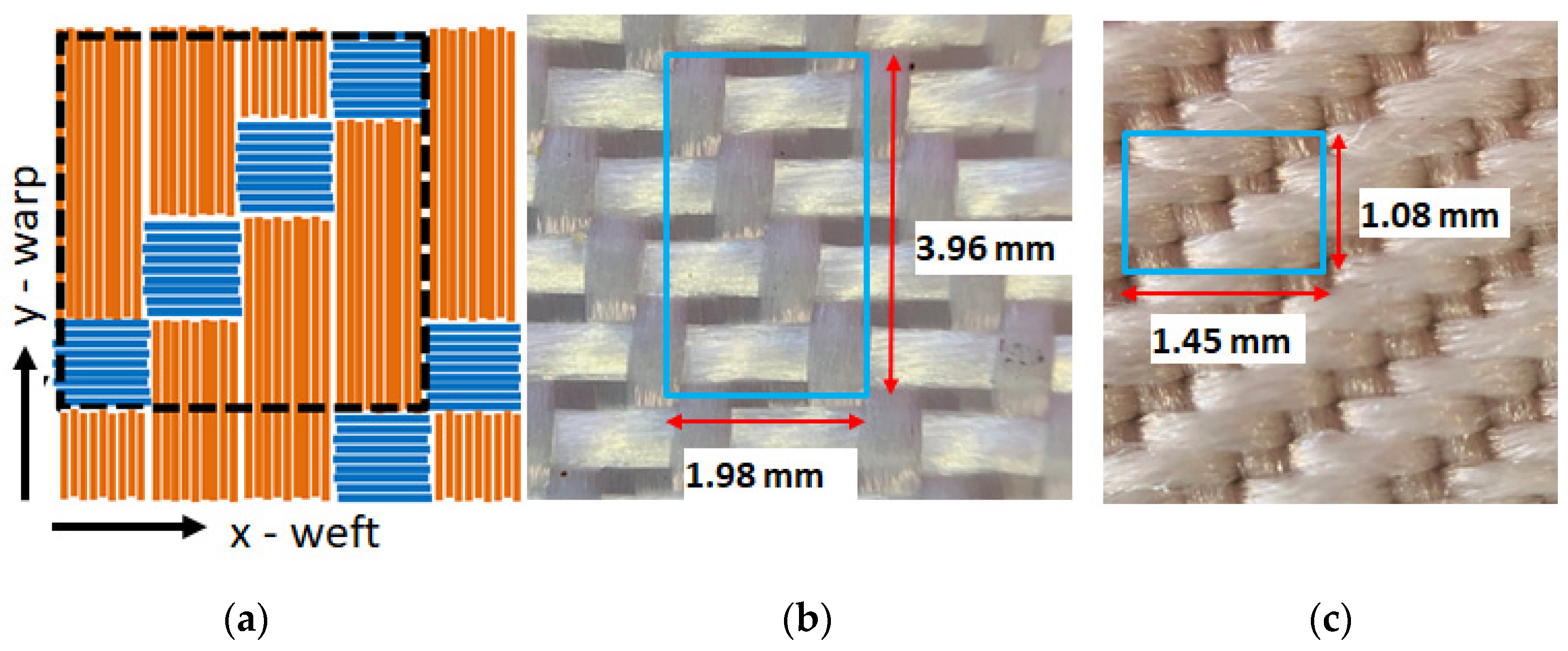
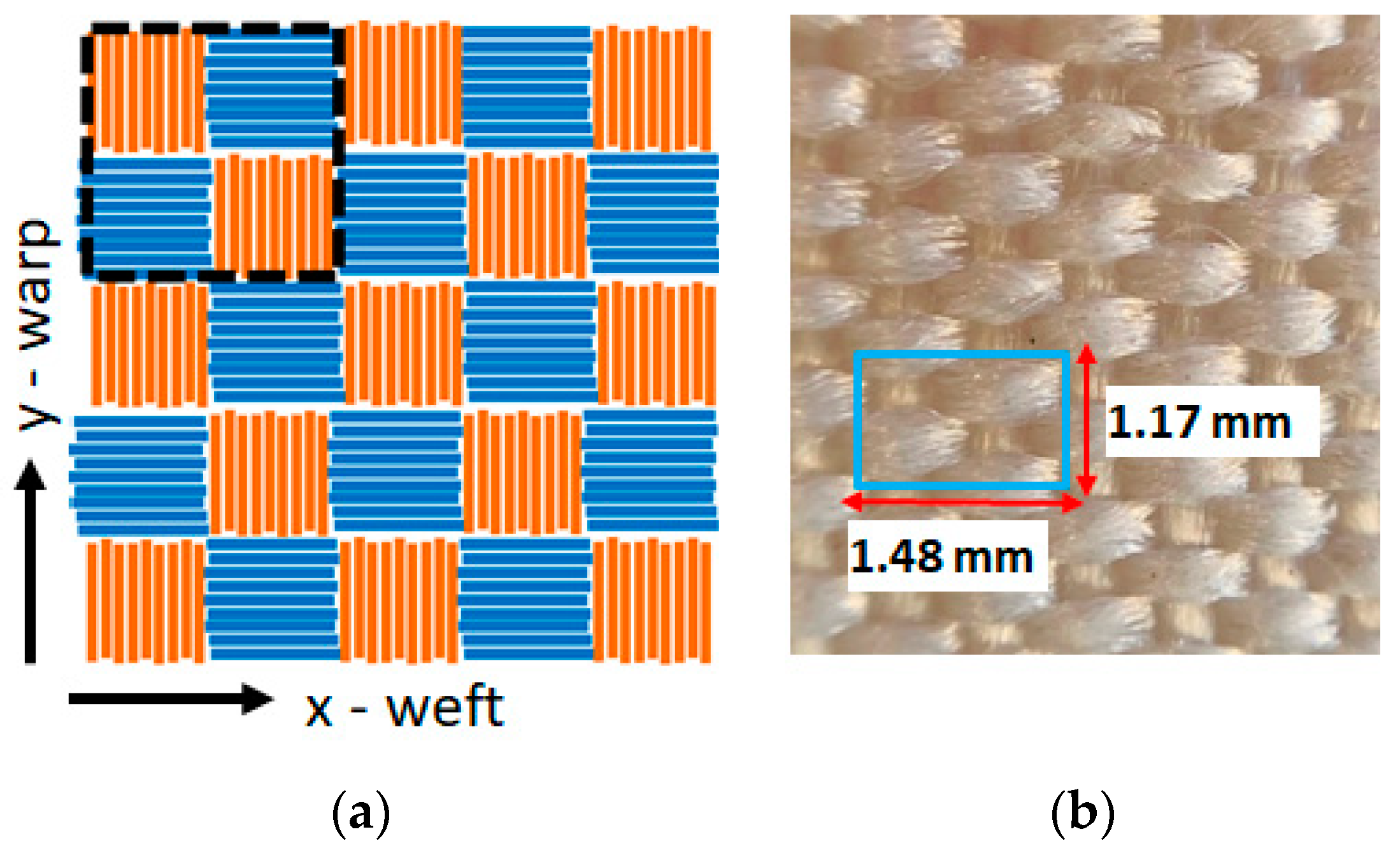

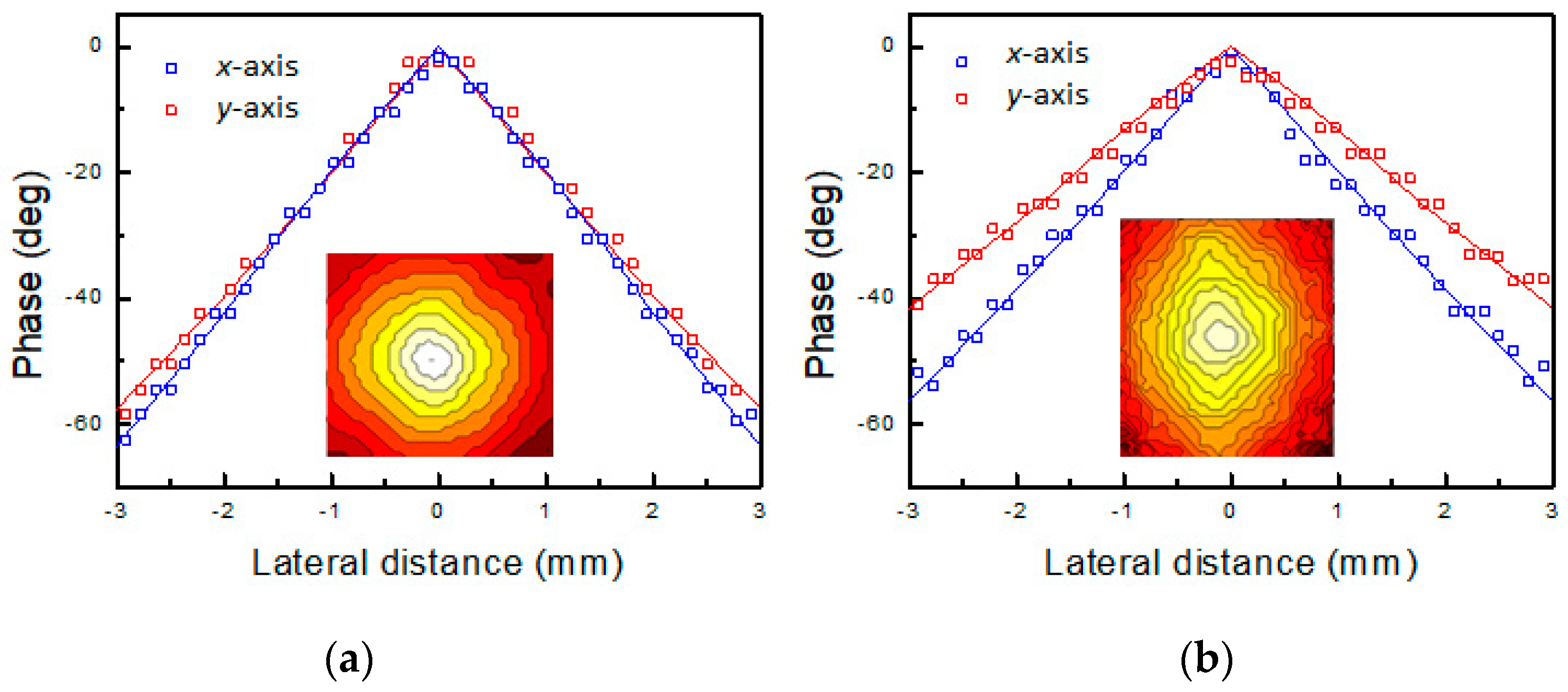
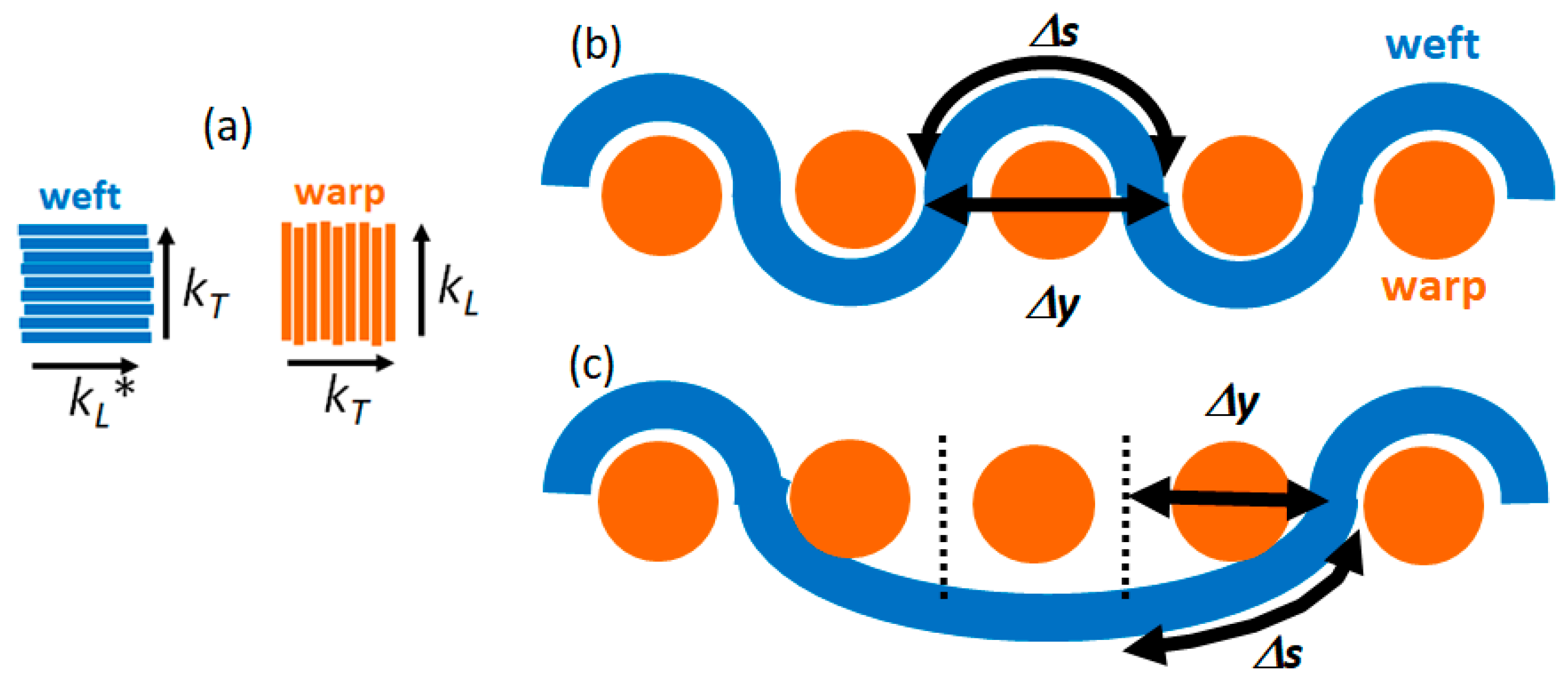
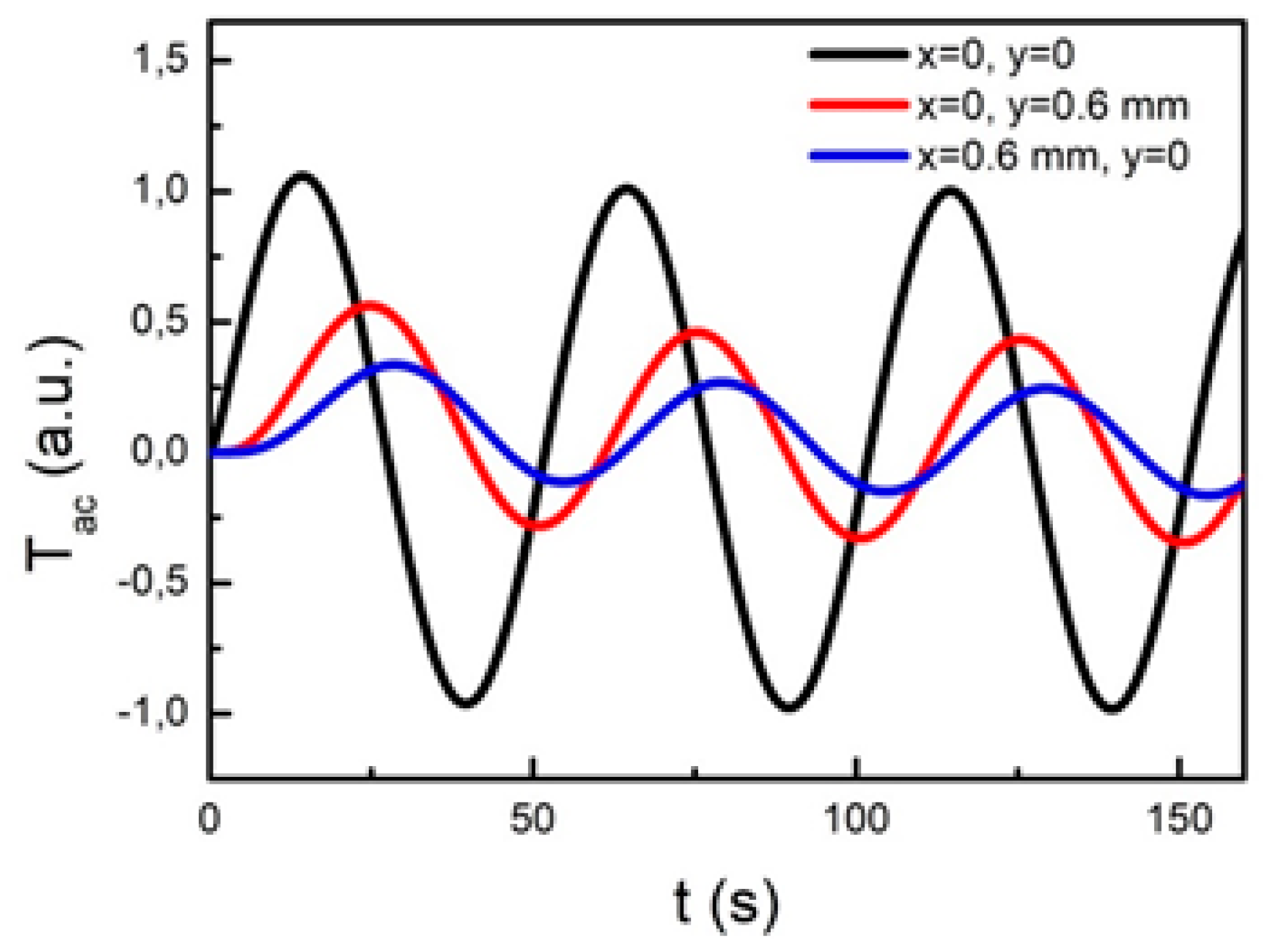
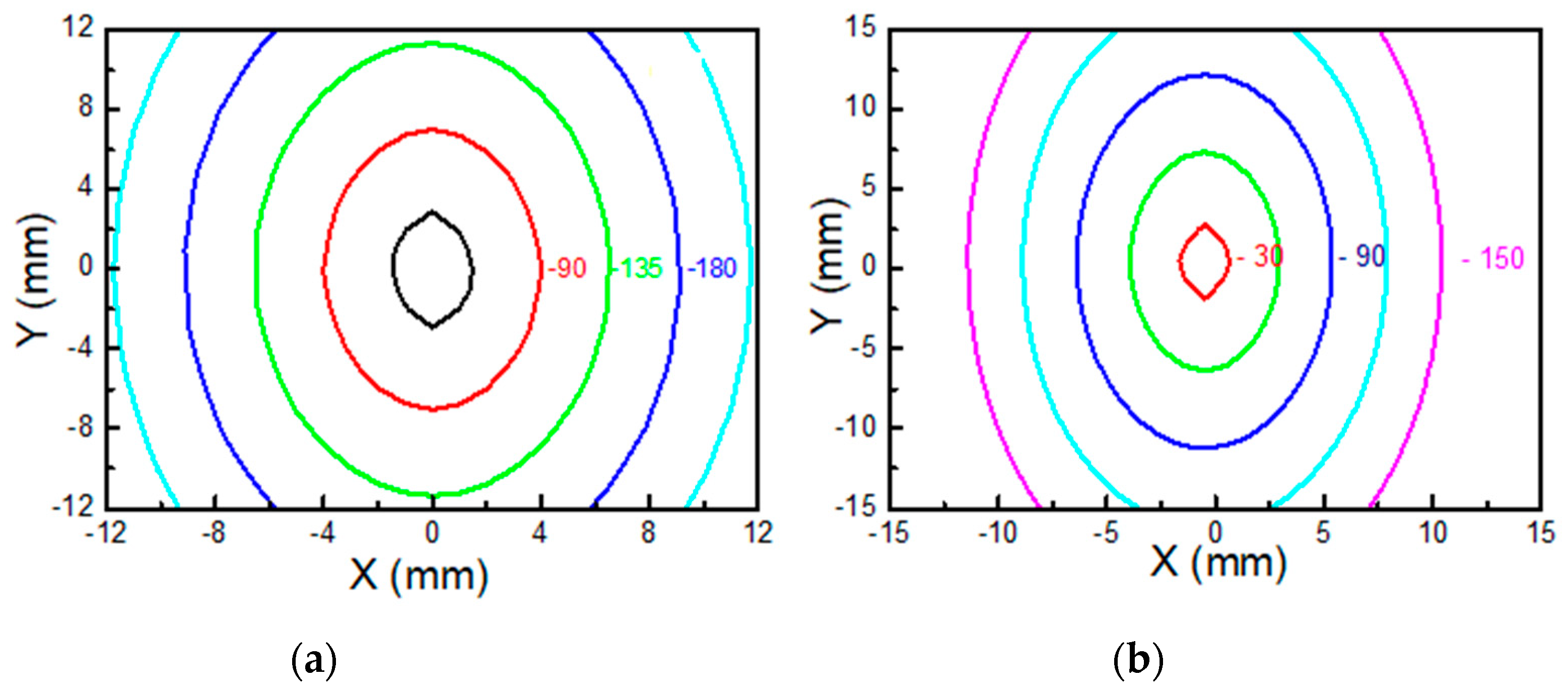
| Sample | Warp Density (dtex) | Weft Density (dtex) | Weaving Pattern | 2D Pixel Δx (mm) | 2D Pixel Δy (mm) |
|---|---|---|---|---|---|
| PES1 | 1100 | 1100 | 3:1 | 0.5 | 1.0 |
| PES2 | 334 | 334 | 3:1 | 0.36 | 0.27 |
| PES3 | 334 | 1100 | 1:1 | 0.74 | 0.58 |
| Sample | Dx mm2/s | Dy mm2/s | Dy/Dx | f | m | δ | kL Wm−1 K−1 | kT Wm−1 K−1 | kL/kT |
|---|---|---|---|---|---|---|---|---|---|
| PES1 | 0.48 | 0.51 | 1.063 | 0.20 | 3 | 0.85 | 0.16 | 0.15 | 1.05 |
| PES2 | 1.07 | 1.15 | 1.075 | 0.09 | 3 | 0.85 | 0.16 | 0.15 | 1.06 |
| PES3 | 0.64 | 1.20 | 1.875 | 0.15 | 1 | 0.36 | 0.16 | 0.15 | 1.06 |
Publisher’s Note: MDPI stays neutral with regard to jurisdictional claims in published maps and institutional affiliations. |
© 2022 by the authors. Licensee MDPI, Basel, Switzerland. This article is an open access article distributed under the terms and conditions of the Creative Commons Attribution (CC BY) license (https://creativecommons.org/licenses/by/4.0/).
Share and Cite
Larciprete, M.; Orazi, N.; Gloy, Y.-S.; Paoloni, S.; Sibilia, C.; Li Voti, R. In-Plane Thermal Diffusivity Measurements of Polyethersulfone Woven Textiles by Infrared Thermography. Sensors 2022, 22, 940. https://doi.org/10.3390/s22030940
Larciprete M, Orazi N, Gloy Y-S, Paoloni S, Sibilia C, Li Voti R. In-Plane Thermal Diffusivity Measurements of Polyethersulfone Woven Textiles by Infrared Thermography. Sensors. 2022; 22(3):940. https://doi.org/10.3390/s22030940
Chicago/Turabian StyleLarciprete, Mariacristina, Noemi Orazi, Yves-Simon Gloy, Stefano Paoloni, Concita Sibilia, and Roberto Li Voti. 2022. "In-Plane Thermal Diffusivity Measurements of Polyethersulfone Woven Textiles by Infrared Thermography" Sensors 22, no. 3: 940. https://doi.org/10.3390/s22030940
APA StyleLarciprete, M., Orazi, N., Gloy, Y.-S., Paoloni, S., Sibilia, C., & Li Voti, R. (2022). In-Plane Thermal Diffusivity Measurements of Polyethersulfone Woven Textiles by Infrared Thermography. Sensors, 22(3), 940. https://doi.org/10.3390/s22030940










